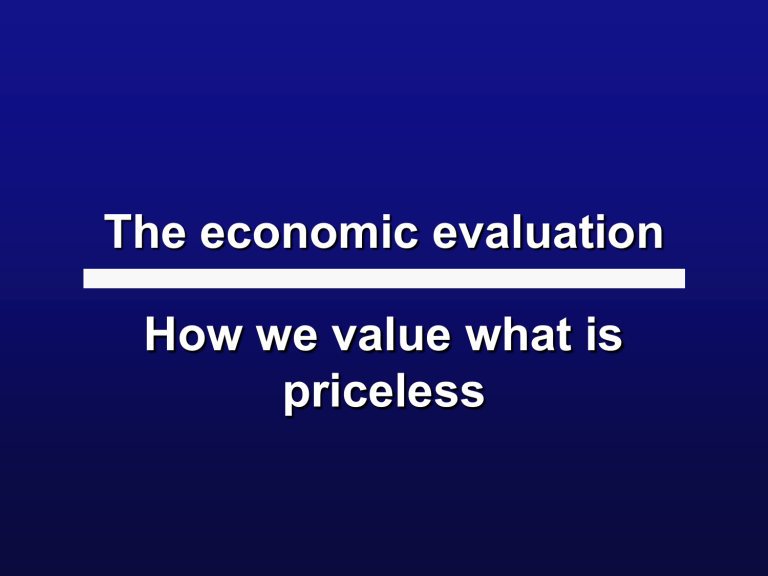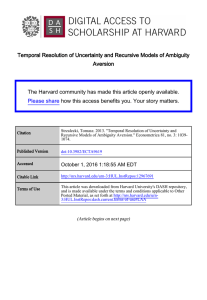eia-lesson 8

The economic evaluation
How we value what is priceless
1 The role of uncertainty
1.1 Uncertainty Typology
2 Disinterested selfishness
3 Environmental degrade and compensations
4. The economic value of environmental property
4.1 Total economic value
4.2 Availability to pay
4.3 Values of use and non use
4.4 Value of option and inheritance
4.5 Value of existence
Also uncertainty on the future influence negatively the quantification of the costs and the non recent profits.
They can be uncertaint
- On the possibility to be alive in the future (risk of death)
- On our future preferences
- On the same entity of the profit or the cost
THE RISK OF DEATH justifies in a certain sense the impatience connected to the discount.
On the other hand it is not remarkable in the social evaluations that includes more than one individual.
THE UNCERTAINTY of the preferences can be remarkable.
UNCERTAINTY OF THE FUTURE ENTITY of the cost/profit doesn't bring an increase in the discount rate:
This would implicate that uncertainty increases in the time exponentially!
The discount consideration can be affected by
PROPENSITY TO THE
UNSELFISHNESS for the future generations
You will have
SELFISH ALTRUISM if the recent generation justifies and acts according to the possible choices of the future generation.
To have
OTHERS DESINTERESTED if the actual generation are concerned essentially to leave to the future one the range of choice as wide as possible.
GENERAL PRINCIPLE OF
ENVIRONMENTAL POLITIC:
The interventions that cause environment degradation can be justified on the light of relative profits provided that they are
COMPENSATED by projects specially for environment improvement
How it will be possible for the individuals to operate choices
ON ENVIRONMENTAL PROPERTY and therefore attribute an economic value if these don't pass through the market and they don't have a well defined price?
THE TOTAL ECONOMIC VALUE of an environmental property refer to the preferences of the individuals and not to its intrinsic characteristics!
Of an environmental property
REFER THE PREFERENCES of the individuals and not to its intrinsic characteristics.
Il metodo più semplice è simulare l'applicazione di una tariffa e osservare come questa influenza le scelte
THE CONSUMER SURPLUS
It can be quantified as difference between availability (maximum) to pay to use a certain property in certain conditions and the effective paid price.
Per i beni pubblici con libero accesso tutta la disponibilità a pagare si traduce in surplus !
To determine the economic value it is necessary to distinguish between:
CONSUMED RELATED VALUE
NON CONSUMED RELATED
VALUE
So a related value to the future use of the environmental resource, exists in
THE OPTION VALUE
or the value attributed to the possibility of using the property in a second moment.
An important dimension of the option value can be
VALUE INHERITANCE
or the option referred to the availability for his own descendants
Non consumed related value emerges from a non instrumental conception of the natural resources which a specific and independent
VALUE OF EXISTENCE
existence is recognized from every present or future, direct or indirect exploitation.
In conclusion:
TOTAL ECONOMIC VALUE
=
VALUE OF USE
+
VALUE OF OPTION
+
VALUE OF EXISTENCE






